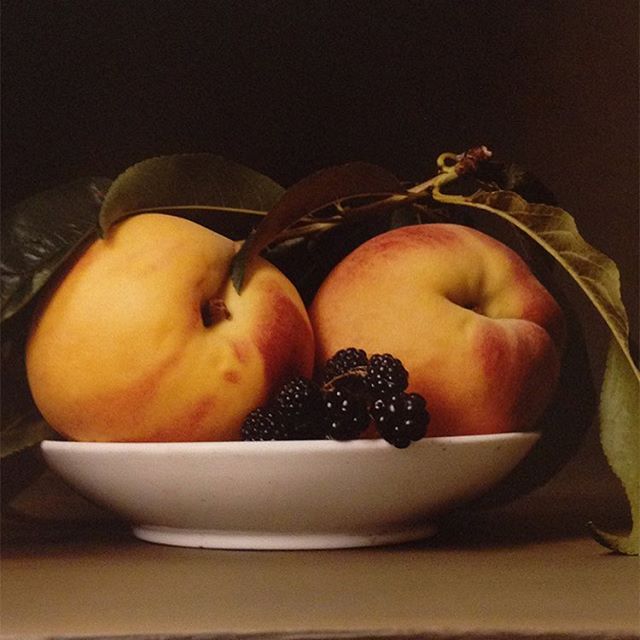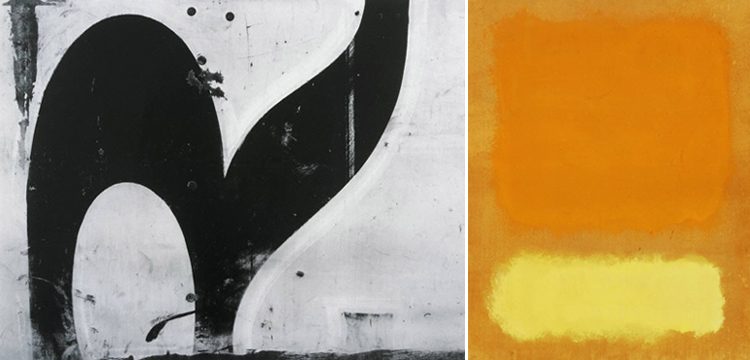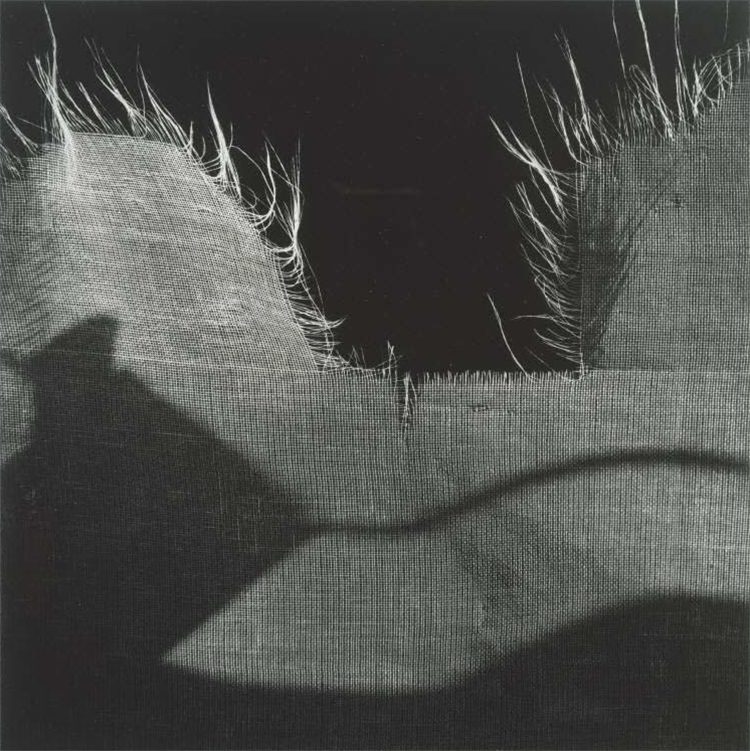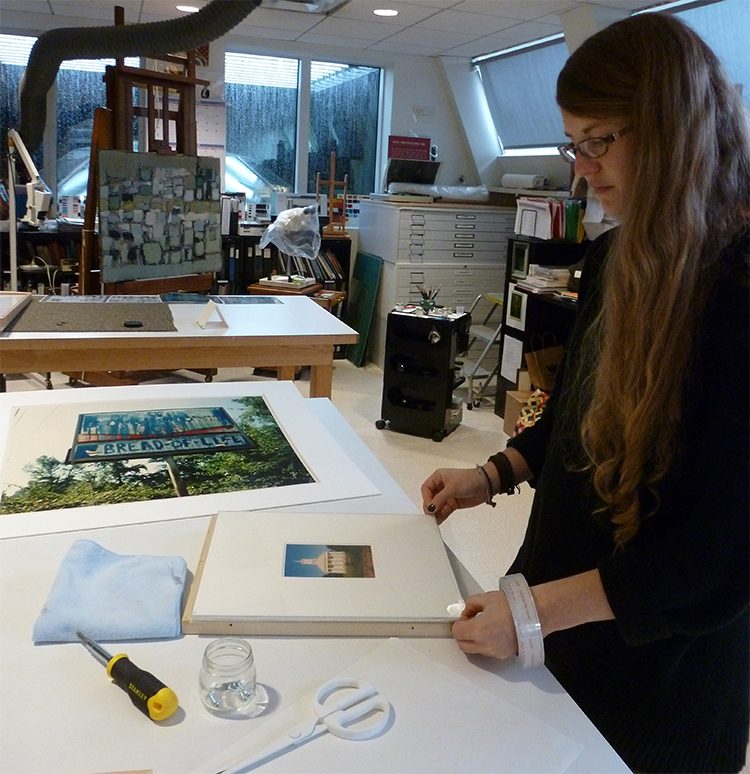We were saddened to hear of the passing of beloved Phillips trustee emeritus and distinguished artist William Christenberry earlier this week. His work continues to resonate and impact in our galleries and beyond. Here, Collections Care Manager Laura Tighe is matting and preparing a microclimate frame for two color photographs by the artist. The works (“Bread of Life,” near Tuscaloosa, Alabama, 1989/printed 1995 above at left; “Church across Early Cotton (Vertical View),” Pickinsville, Alabama, 1964/printed 2000 below and to right) will be part of an upcoming solo exhibition in December 2016 at Maryland Institute College of Art.
Tag Archives: photography
Things Aren’t Always What They Seem
My very first experience in a museum was, as far as I can remember, intimidating. I over-distanced myself from Auguste Rodin’s exquisite bronze sculptures for fear that I would fail to resist the impulse to touch them and get myself into trouble.
I felt a similar impulse when I ran into Sharon Core’s series of works in a second floor gallery at the Phillips today. Although the experience wasn’t intimidating this time, the temptation to touch the work was as hard to resist. This time, it wasn’t a sculpture; yet as solid and life-like. The photographs’ three-dimensional quality and tangibility tricked my eyes into thinking that what I saw was a real object.

Sharon Core, Peaches and Blackberries, 2008. Chromogenic print, 13 1/2 x 17 1/2 x 1 3/4 in. The Phillips Collection, Washington, DC, Gift of The Heather and Tony Podesta Collection, 2015
I had to stare at the works for a while to decide whether these were photos or paintings; their subject, composition, and painterly quality instantly reminded me of still life paintings from the 19th century. As speculated, Core was inspired by the compositions of 19th century American still life painter Raphaelle Peale. By meticulously rendering details and emphasizing texture, Core overcomes the limitations of photography and captures features that would have been hard to see even in real life. In fact, the highly contrasting lights, vibrant coloration, and the lustrous texture of the objects are all pictorial elements that could have only been achieved through the labor-intensive process of assembling the materials and arranging the setting.
Across the room hangs a row of still life paintings by post-Impressionist artists. One of them is Paul Cézanne’s Glass and Apples, which is rather muted in tone with no striking tactile appeal. With the emergence and development of photography in his time, Cézanne would have found no point in creating a photo-realistic representation; rather, he was more concerned with capturing the very essence of painting and conveying his own perception of the subject.
Ironically enough, Core’s vibrantly colored, highly-staged photographs that imitate the style of still life painters predating Cézanne, hang right across from his rather simple composition.
As FotoWeek is approaching, come visit the Phillips and take a look into Core’s work that jumps across the boundary between painting and photography. What about Core’s prints is similar to Cézanne’s painting? What’s different?
Summer Park, Marketing & Communications Intern
The Ambiguity of a Photograph, Part 2: Photographic Abstraction
This is a multi-part blog post; read Part 1 here.
Though we usually associate abstraction with the medium of painting, Aaron Siskind’s photograph Chicago 30 is decidedly abstract.

(left) Aaron Siskind, Chicago 30, 1949. Gelatin silver print, 13 3/4 in x 7 1/2 in, The Phillips Collection, Washington, DC, Gift of the Phillips Contemporaries, 2004 (2) Mark Rothko, Untitled, 1968. Acrylic on paper mounted on hardboard, 23 13/16 x 18 11/16 in. Gift of the Mark Rothko Foundation, Inc., 1985 © 2005 Kate Rothko Prizel & Christopher Rothko/Artists Rights Society (ARS), New York
Can a photograph be painterly? If it fools the eye enough, can it have the same visual appeal of a painting? Of course there are key differences between the mediums of painting and photography, but for centuries the aim of painting was to trick the viewer; to create something so real and present that the viewer forgot that it was simply paint on canvas. The advent of photography and the emergence of modernism and then abstract expressionism helped shift the art world away from exact reproduction of the physical world. Compared with Mark Rothko’s untitled 1968 abstract expressionist painting (above right), the flourish of black in Siskind’s work appears almost like a brush stroke while Rothko’s appears devoid of the artist’s hand.

Aaron Siskind, Mexican 32, 1982. Gelatin silver print, 20 in x 16 in. The Phillips Collection, Washington, DC, Gift of Marie M. Martin, 2005
Siskind’s Mexican 32 is also an abstract work, but it contains a hint of context. The identifiable shadow creates a sense of space in the work; the fraying fabric provides texture, as well as a three dimensionality and depth to the photograph (although this depth is lessened by the stark black background).
Siskind explored abstraction through his camera. These works are an important contribution to the abstract expressionist movement, in which Siskind was socially and professionally involved, but these works are also an intimate window into how Aaron Siskind understood and viewed the world around him.
Emma Kennedy, Marketing & Communications Intern


